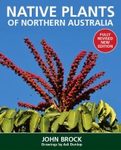About this book
Language: French
Throughout the ages, human beings have relied on Nature for their basic needs and, not the least, medicines. Plants have formed the basis of sophisticated traditional medicine systems that have been in existence for thousands of years and continue to provide mankind with new remedies. The advent of synthetic medecines after the Sencond World War has to some extent marginalized their importance. Nontheless, the interest in Nature as a source of potential chemotherapeutic agents continues. This is by virtue of the fact that natural products and their derivatives represent more than 50% of all drugs in clinical use in the world. Higher plants contribute no less than 25% of the total.
Mauritius, like so many other tropical countries, has a unique flora and a rich pharmacopeia. The latter, unfortunately, is not well known and is under-utilesed by the general public. This traditional knowledge, which also forms part of our cultural heritage, is gradually disappearing. The present publication brings together data on the therapeutic potential of different types of plants: aromatic, ornamental plants, dye-bearing plants, spices amongst others. 175 medicinal Plants, illustrated with 241 colour photograph are reported here.
Plantes Médicinales de Maurice et d'Ailleurs of each plant regroups the following information: botanical and vernacular names, the origin and distribution, the different plant parts used, the traditional uses, indications, active ingredients, pharmacology, potential side effects that may arise upon using these plants. The introductory part of this text provides a broad picture of the history of medicinal plants and their contribution to modern medicine to date.
Summary in French:
Les plantes médicinales ont été, depuis la nuit des temps, l’arsenal thérapeutique de l’Homme. Marginalisées depuis plusieurs décennies, elles connaissent en ce moment un regain d’intérêt considérable de la part du public et des chercheurs entre autres. Les raisons sont multiples. Dans les pays en voie de développement, c’est parfois le seul moyen de se faire guérir. Tandis que dans les pays développés, les plantes médicinales représentent une alternative aux médicaments allopathiques.
Maurice comme tant d’autres pays tropicaux, possède des plantes uniques, une pharmacopée riche mais méconnues et sous-utilisée par le grand public. Ces traditions forment aussi partie de notre patrimoine culturel. La présente publication rassemble des données sur le potentiel thérapeutique de plusieurs types de plantes (aromatiques, tinctoriales, ornementales, épices entre autres).
Quelques 175 plantes médicinales sont illustrées avec 241 photographies couleur. Chaque monographie regroupe des informations comme : le nom botanique et vernaculaire de la plante, l’origine et distribution, les parties utilisées, leur usage traditionnel, les indications, les agents actifs et leur pharmacologie, les effets secondaires et aussi les statuts régulateurs régissant ces plantes médicinales. L’introduction de ce texte donne une historique des plantes médicinales depuis l’antiquité jusqu’à ce jour et fait aussi le point sur leur contribution dans la médecine moderne.
Customer Reviews
Biography
Ameenah Gurib-Fakim, PhD is presently the Managing Director of the Centre for Phytotherapy Research (CEPHYR). She has authored several books on Medicinal Plants and on the flora of Mauritius and Africa. In 2010, she also co-authored the African Herbal Pharmacopoeia.
Elected Fellow to the African, lslamic Academies of Science and the Linnean Society of London, she has received several international scientific prizes namely the l'Oreal-Unesco Prize for Women in Science (2007), the Special “Woman Professionals in Science” Prize of the CTA/NEPAD/RU FORUM/AG RA/ATPS/FARA (2009); the African Union ‘Woman in Science‘ Prize (2009). In 2013, she received the Honorary Doctorate from the Universite Pierre Marie Curie (Sorbonne Universites).






![Plantes Médicinales de Maurice et d'Ailleurs [Medicinal Plants of Mauritius and of the World] Plantes Médicinales de Maurice et d'Ailleurs [Medicinal Plants of Mauritius and of the World]](http://mediacdn.nhbs.com/jackets/jackets_resizer_xlarge/21/216157.jpg?height=620)
![Plantes Médicinales de Maurice et d'Ailleurs [Medicinal Plants of Mauritius and of the World]](http://mediacdn.nhbs.com/jackets/jackets_resizer/21/216157.jpg)
![Plantes Médicinales de Maurice et d'Ailleurs [Medicinal Plants of Mauritius and of the World]](http://mediacdn.nhbs.com/jackets/jackets_resizer/21/216157_1.jpg)
![Plantes Médicinales de Maurice et d'Ailleurs [Medicinal Plants of Mauritius and of the World]](http://mediacdn.nhbs.com/jackets/jackets_resizer/21/216157_2.jpg)
![Plantes Médicinales de Maurice et d'Ailleurs [Medicinal Plants of Mauritius and of the World]](http://mediacdn.nhbs.com/jackets/jackets_resizer/21/216157_3.jpg)
















